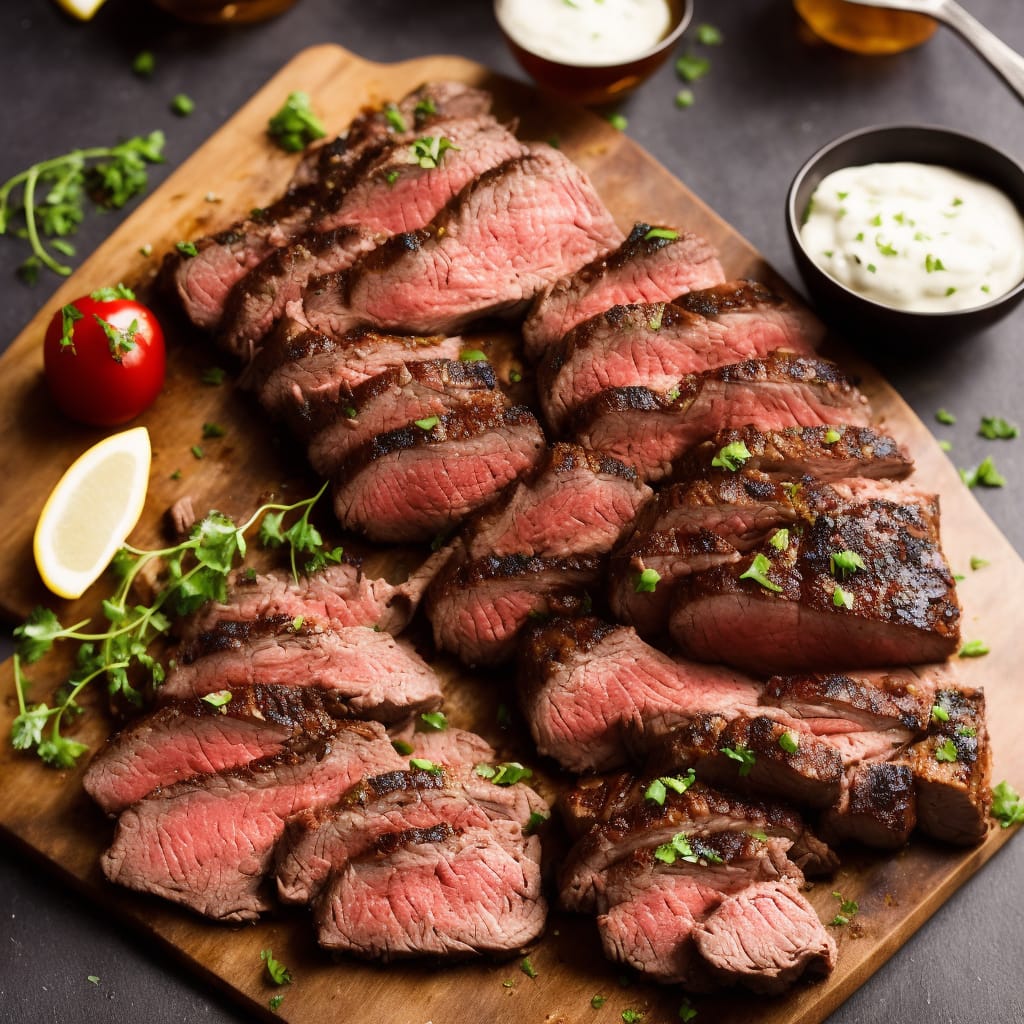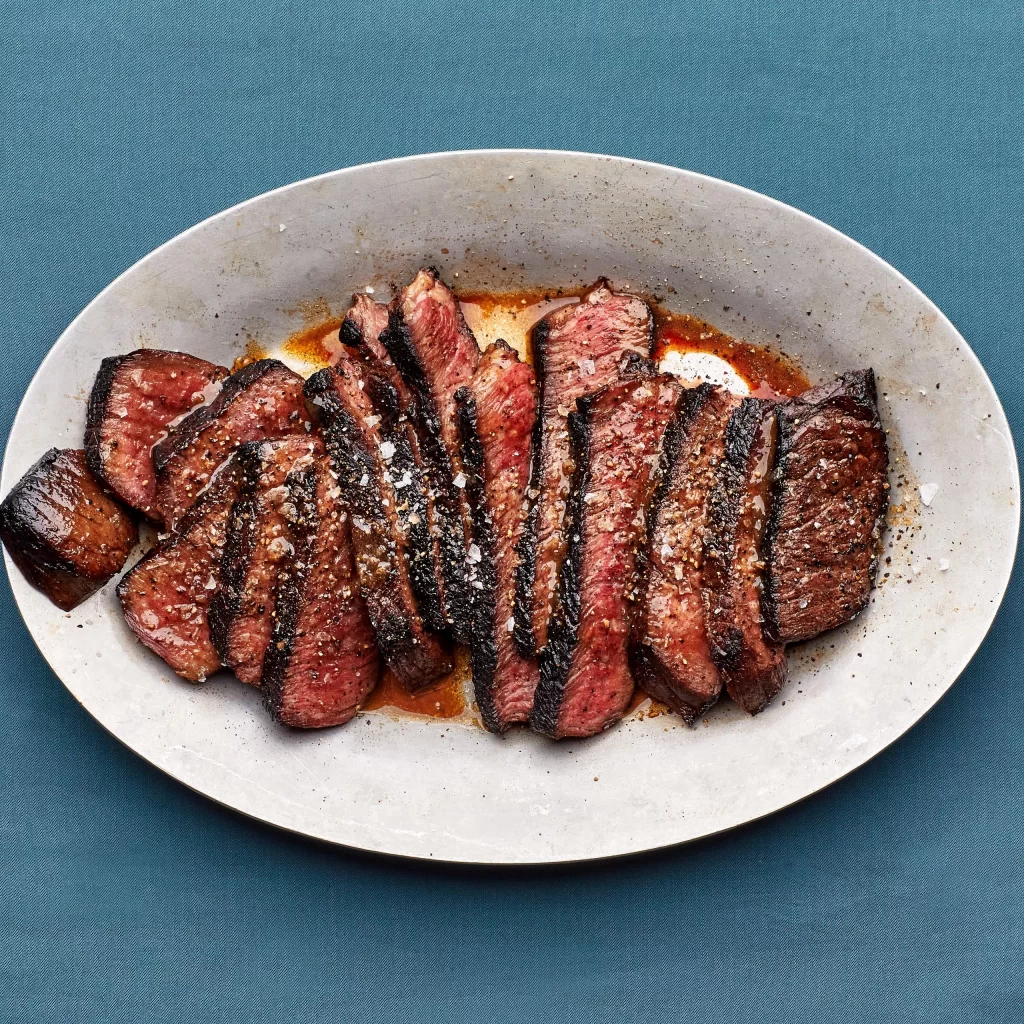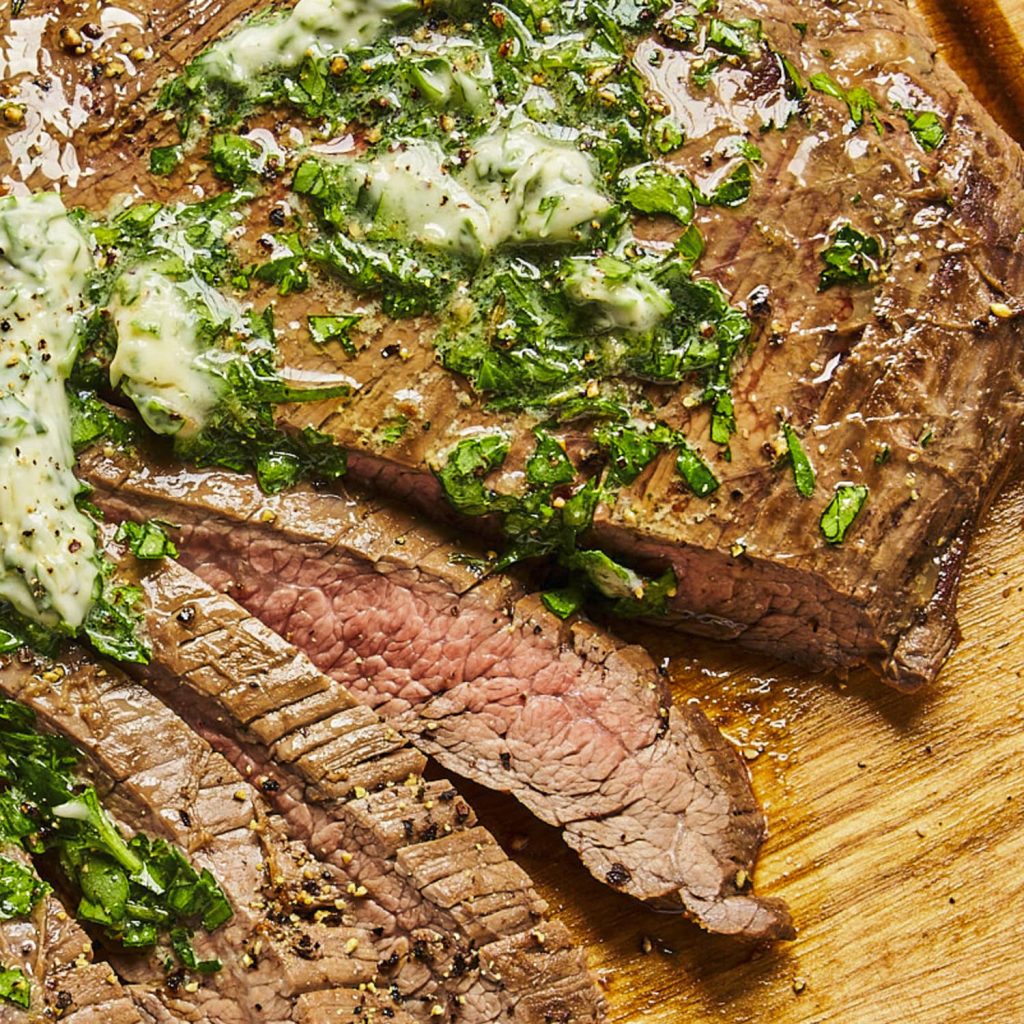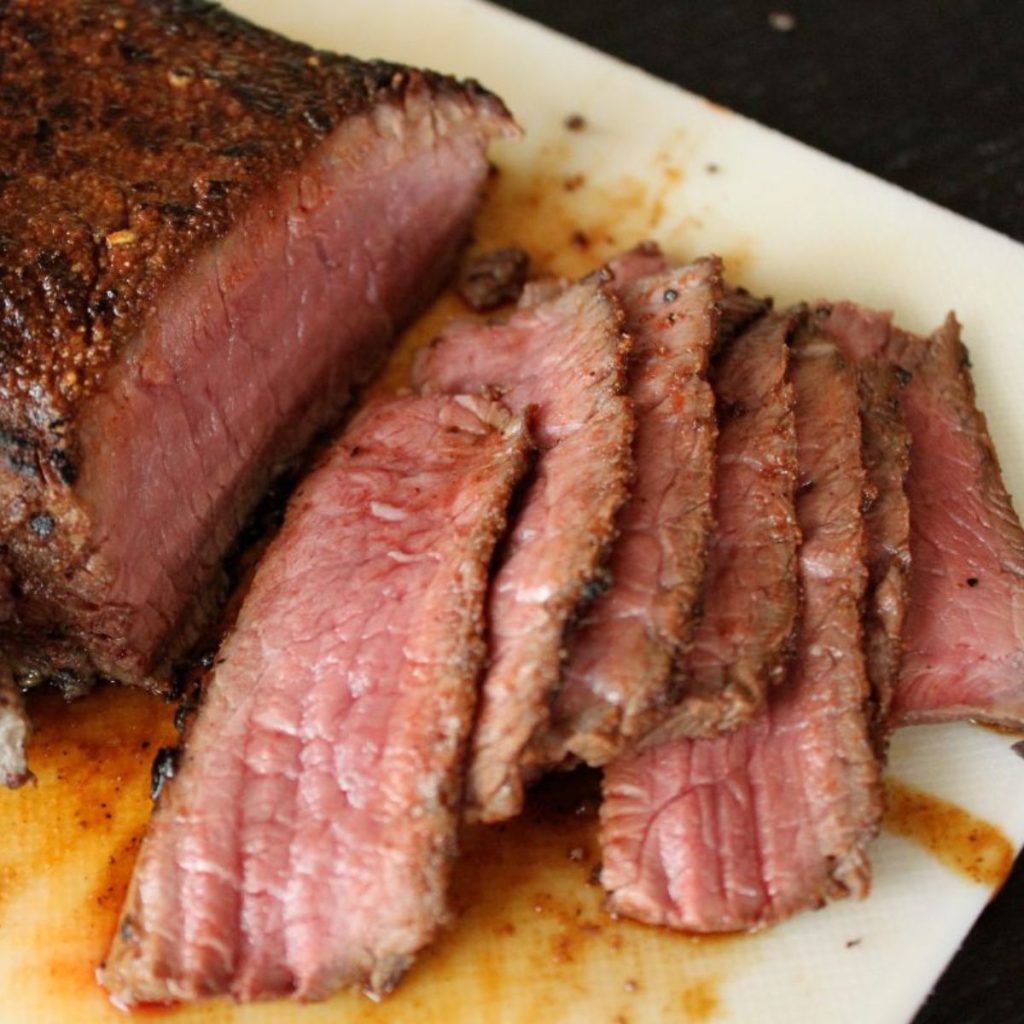Mastering Stove-Top London Broil Cooking Techniques
Introduction to London Broil
London Broil is a classic that never fails to impress. When you know how to cook a London Broil on the stove, you can create a mouthwatering meal that’s both tender and flavorful. Before we dive into the cooking process, let’s get to know what London Broil really is.
It’s not just a dish—it’s a cooking method. London Broil refers to marinated beef, broiled or grilled, then cut across the grain into thin slices. It’s a technique often used for tougher cuts of meat, such as flank or top round steak, to ensure tenderness.
When done right, stove-top London Broil can rival the finest steakhouse offerings. It’s all about marination, precise cooking, and proper slicing. The goal is to lock in juices and create a dish with the perfect texture and depth of flavor. And the best part? You can achieve steakhouse quality in your own kitchen.
Powerful flavors and simplicity go hand in hand with this dish. With a few key tips and careful attention to detail, anyone can master the art of cooking London Broil on the stove. Let’s get started by selecting the perfect cut of meat for a tender, succulent dining experience.

Selecting the Perfect Cut of Meat
When cooking London Broil on the stove, choosing the right cut is crucial for tenderness. Flank and top round are traditional picks, both known for their rich flavor when cooked properly. Look for meat that’s uniform in thickness. This helps ensure even cooking. Ideally, select a cut that’s about 1 to 1.5 inches thick. Thin cuts may dry out or overcook quickly, while overly thick cuts can be challenging to cook through without burning the exterior.
Meat quality matters too. Go for choice or prime grade beef if possible. These grades have more marbling, meaning a juicier and more flavorful result. If budget is a concern, select a cut that looks fresh, with a bright red color and a bit of marbling. Remember, the marinade will also help tenderize the meat, so a slightly lesser grade can still work well.
To ensure you get the best out of your meat, ask a butcher for advice. They can guide you to the best cuts for stove-top London Broil. Lastly, always check for any tough membranes or excess fat. Trimming these before marinating will improve the final texture and enjoyment of your dish.

Preparing Your Ingredients and Tools
Before you start cooking London Broil on the stove, preparation is key. You need the right ingredients and tools to ensure success. Here’s how to get ready.
Marination Ingredients
Start by gathering the ingredients for your marinade. Combine a mix of oil, acidic components like vinegar or lemon juice, and your favorite herbs and spices. A good marinade will tenderize the meat and infuse it with flavor. Make sure you have enough to cover your cut of meat completely.
Cooking Tools
Next, select a heavy skillet or frying pan, preferably cast iron. Cast iron provides even heat distribution, crucial for searing meat. Have a pair of tongs ready for turning the meat without piercing it. Piercing lets juices escape, leading to a drier steak.
Additional Preparations
In addition to your marinade and pan, ensure you have a meat thermometer. This will help you keep track of the internal temperature. A cutting board and sharp knife are also important. You’ll use them after cooking to slice the meat against the grain.
Proper preparation sets you up for cooking London Broil to perfection. With ingredients prepped and tools at hand, you’re ready to move on to the next step: marinating your meat for optimum flavor and tenderness.
Marinating Your London Broil
Marinating is vital for a tender London Broil. It breaks down tough fibers. Start with your meat at room temperature. This lets the marinade soak in better. Use a zip-top bag or shallow dish for marinating. Make sure all parts of the meat are well covered. Reserve some marinade for basting during cooking. Do not reuse marinade that touched raw meat.
Leave the steak to marinate for at least 4 hours. Overnight is even better for flavor. Keep the meat in the fridge while it soaks up the flavors. Turn the bag or steak occasionally. This ensures all sides get well-marinated.
After marinating, let the steak come to room temperature. Do this before you start cooking. It helps in even heat distribution. It also reduces the cooking time. Remember to discard any used marinade. Do not use it as a sauce unless boiled first. It might contain harmful bacteria.
A well-marinated London Broil maximizes taste and tenderness. It’s a simple step you can’t skip when learning how to cook London Broil on the stove.

The Pan-Searing Method
Cooking London Broil on the stove requires a good sear. Here’s how to achieve it. Start by heating your pan. Put it on high heat until it’s very hot. A hot pan is key for searing. Add a bit of oil once the pan is heated. It should be a high smoke point oil, like canola or avocado.
Take the marinated meat from the refrigerator. Let it sit until it reaches room temperature. Next, pat the steak dry with paper towels. This is because excess marinade can cause splattering. Place the steak in the pan using tongs. You will hear a sizzle. That’s your cue the pan is ready.
Don’t move the steak for a few minutes. This creates a good crust. It seals in flavor and juices. Flip the London Broil with tongs after a nice crust forms. Avoid using a fork to prevent juice loss. Sear the other side similarly.
Reduce heat if the pan is smoking excessively. A little smoke is normal when searing. But too much means it’s too hot. You don’t want the outside charred and the inside raw. Moderate the heat to get a perfect sear.
Baste the meat with the reserved marinade. Do this after flipping to add more flavor. Remember to cook both sides evenly. Time it according to how you prefer your meat. Rare or well-done, use your thermometer to be precise.
By following this pan-searing method, you lock in flavors. You’ll have a steak that’s caramelized on the outside and tender inside. This is a crucial step in learning how to cook London Broil on the stove.
Keeping an Eye on the Temperature
Monitoring the temperature is crucial when learning how to cook London Broil on the stove. To start, preheat your skillet on medium-high heat. Aim for a surface temperature around 400°F (204°C), which is ideal for searing meat.
Once your London Broil hits the pan, keep a close eye on the internal temperature. Insert your meat thermometer into the thickest part of the steak. For medium-rare, look for 130°F to 135°F (54°C to 57°C). If you prefer medium, aim for 140°F to 145°F (60°C to 63°C). Remember, the steak will continue to cook a few degrees more while it rests.
Adjust the stove heat as needed. If the pan gets too hot too fast, lower the heat. This ensures your London Broil cooks evenly without burning. Flip the meat occasionally and check the temperature. Keep the kitchen well-ventilated to handle any smoke from searing.
The exact cooking time will vary based on the meat thickness and your desired doneness. Stay alert and be responsive to what the meat tells you through the thermometer. It’s your best guide to reach the perfect internal temperature without overcooking.
Using these tips will help you master the right temperature and timing. This is essential for a deliciously seared London Broil, served just the way you like it.
Resting the Meat: A Crucial Step
Once you have finished cooking your London Broil on the stove, the next essential step is to let it rest. This is critical for a few reasons. Resting allows the juices, which have been driven to the center by the heat, to redistribute throughout the steak. If you slice into the meat too soon, those tasty juices will end up on your cutting board instead of in your mouth. Here are steps to follow for resting your meat properly:
- Remove the steak from the pan right after reaching the desired internal temperature.
- Place it on a cutting board or a plate.
- Tent the steak loosely with foil. This keeps it warm without cooking it further.
- Let the steak rest for about 5 to 10 minutes. The thicker the cut, the longer it should rest.
- Use this time to prepare sides or set the table.
By following these steps, you ensure your London Broil will be as flavorful and juicy as possible. Keep in mind, the meat’s temperature can rise a few degrees while resting, so take it off the heat just before it reaches your preferred doneness. Perfecting this resting phase is a must-know aspect of how to cook London Broil on the stove.

Serving Suggestions for London Broil
Once your London Broil is perfectly cooked and rested, it’s time to serve this magnificent dish. The way you present and accompany your London Broil can elevate your meal from good to great. Here are some serving suggestions that pair well with its rich flavors:
- Slice it Thinly: Cut the meat across the grain into thin slices. This enhances tenderness.
- Pair with Sides: Serve with roasted vegetables, mashed potatoes, or a fresh salad. Complement the flavors.
- Add a Sauce: Offer a side of horseradish, béarnaise, or a red wine reduction for an extra kick.
- Garnish: Use fresh herbs like parsley or chives for a pop of color and flavor.
- Grains are Great: Quinoa, rice, or couscous can absorb the meat’s juices, adding deliciousness.
Remember to present your London Broil in a way that showcases your effort. Arrange the slices neatly on a platter. Pour a little of the reduced marinade over the top for additional flavor and shine. Serve immediately to relish the warmth and juiciness.
Choosing the right sides and presentation turns your London Broil into a feast for the eyes and the palate. Enjoy the compliments from your diners as they savor every bite of your stove-top masterpiece.
Cleaning Up and Maintaining Your Cookware
After enjoying a delicious London Broil, cleaning and maintaining your cookware is essential for its longevity. Here’s how to do it properly.
- Let your pan cool down before cleaning. Sudden temperature changes can damage it.
- Use a non-abrasive sponge to scrub the pan. This prevents scratches that can build up over time.
- If there are stuck-on bits, soak the pan in warm water. Then, gently scrape them off with a wooden spoon.
- Avoid using steel wool or abrasive cleaners. They can strip away the seasoning of cast-iron cookware.
- Dry your pan immediately after washing to prevent rust.
- For cast-iron pans, apply a light coat of oil after cleaning. This maintains its non-stick surface.
- Store your cookware in a dry place. Moist environments can lead to rust, especially for cast-iron items.
By following these steps, you ensure your cookware remains in top condition for your next culinary adventure, including more stove-top London Broils. Proper care means better cooking results and extended life for your pans.
